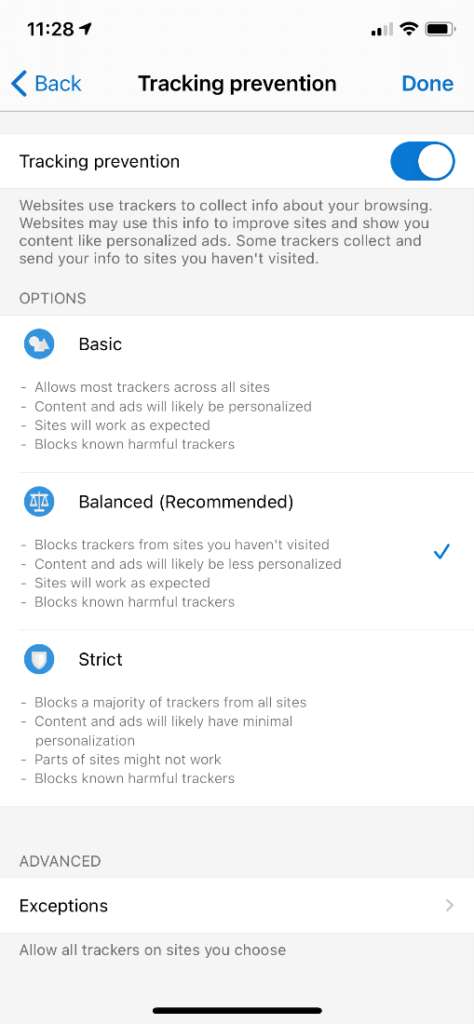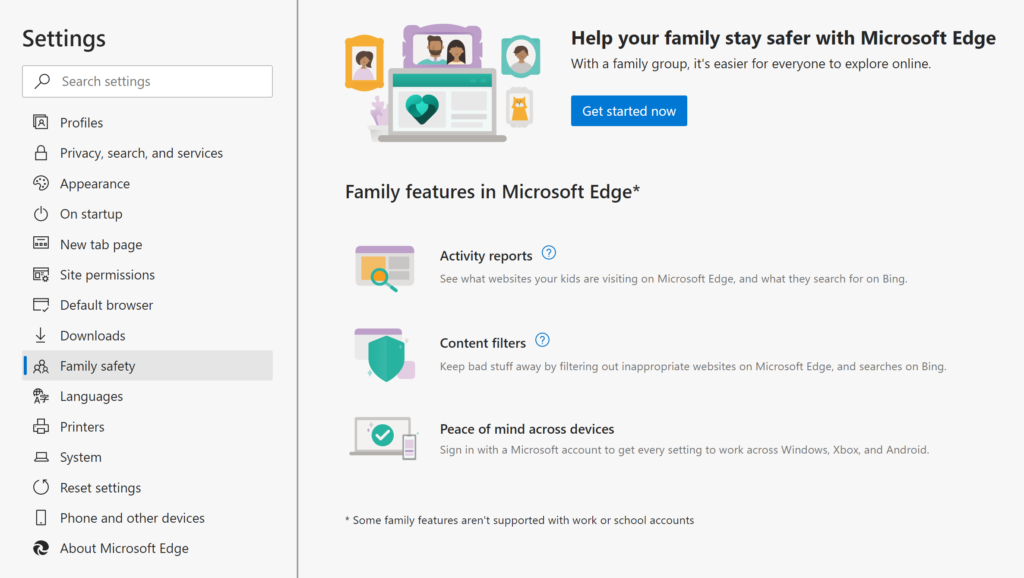October is almost over! The leaves are changing, pumpkin spices are everywhere, and frights and haunts are becoming commonplace. In the U.S., it’s also National Cyber Security Awareness month. To celebrate it all, we’ll share some of the great security and privacy features that we’ve added to our new browser. Online safety and privacy are important, and we want you to trust that your browser will help keep you safe during your online experiences.
Tracking prevention
Websites use trackers to understand how you interact with them and browse the web. These trackers can have many uses, including enabling functionality like comments sections, article sharing on social media, and personalized ads. Some trackers collect data about you across multiple sites, such as your favorite places to get news and go shopping. This is why it can sometimes feel like an ad follows you around the web.

Microsoft Edge’s tracking prevention is designed to detect and block known trackers whether you’re on your desktop or your mobile phone. We put you in control of which trackers to block with three levels to choose from: basic, balanced, and strict. Tracking prevention’s balanced mode is enabled by default, helping protect you from tracking while keeping the websites you visit working smoothly. Known cryptomining and fingerprinting trackers are always blocked at all three levels to stop these potentially harmful trackers.

SmartScreen
Microsoft Edge helps keep you safe from spooky social engineering attacks with Microsoft Defender SmartScreen. SmartScreen is a reputation-based service that protects against malicious content on the web, including phishing, technical support scams, malware, malvertising, and potentially unwanted applications. Thanks to SmartScreen, Microsoft Edge is more secure than Chrome and Firefox by offering better protection against phishing and malware attacks on Windows 10, as reported in an independent study by NSS Labs.

SmartScreen is turned on by default for consumers and controlled by enterprise via group policies. Try our new feature that protects against potentially unwanted apps by going to edge://settings/privacy.
Family Safety
Microsoft Family Safety empowers you and your family to create healthy habits and help protect the ones you love. With web and search filters, family organizers (like parents and caregivers) can create a safe space for their younger family members to explore online. Web filters will automatically block websites that may be too mature and allow organizers to block other sites that may be inappropriate. Search filters will also be applied to set Bing SafeSearch to Strict. When activity reporting is turned on, organizers will get a summary of members’ device and app use, website visits, and search terms they used in Microsoft Edge.

To ensure your family is protected, add them as a member to a family group and make sure they sign in with their account on Windows and Xbox. On Android, members should sign in with their Microsoft account in Microsoft Edge for family features to apply. Organizers can also view or manage the member browsing experience through the Microsoft Family Safety app.

Get started with a family group or update family settings at https://family.microsoft.com.
Secure DNS
To navigate to a website, the browser needs to look up the network address (e.g. 93.184.216.34) for the host name (e.g. example.com) that’s used in the website’s URL. Secure DNS performs this lookup using a service over an HTTPS connection to the DNS service provider, thus protecting the lookups from modification or eavesdropping by attackers on the network.
By default, your current DNS service provider is used to avoid disruptions to your browsing. Microsoft Edge also offers alternate secure DNS providers. You can choose your secure DNS settings in edge://settings/privacy.
Password Monitor
Passwords are the metaphorical keys that protect your data on the web, help manage your online accounts, and offer personalized and delightful experiences. For these very reasons, they are attractive to criminals. Many websites require you to create an account with a password, and many people reuse the same passwords on many sites to make it easier to remember them. These sites can inadvertently divulge the passwords through phishing scams or large-scale data breaches. The passwords may then get traded on the dark web and used by criminals to take over accounts.
To help protect yourself from such attacks, it’s critical to identify if any of your passwords are compromised and then quickly update them. Password Monitor in Microsoft Edge helps you do exactly this; it securely checks all your stored passwords against a repository of known-compromised passwords and alerts you if a match is found, so you can change them.
We humans are not great at following good password practices, as multiple studies have shown. Choosing easily cracked passwords or reusing passwords across websites are two common mistakes many of us make. Password Monitor helps protect our accounts even when we make mistakes.
Password Monitor is available today in Canary and Dev channels for testing. Simply navigate to edge://settings/passwords and turn the feature on. (Download the latest Canary or Dev channel)
Committed to helping keep everyone safe on the web
On the Microsoft Edge team, we take our responsibility to help keep all our customers safe and private very seriously. We’re constantly working to keep ahead of threats and intrusive behavior on the web, and we look forward to continuing to share how we are innovating in security and privacy. Please connect with us on our Twitter and forums if you have feedback and suggestions.
– Elliot Kirk, Senior Program Manager, Microsoft Edge
